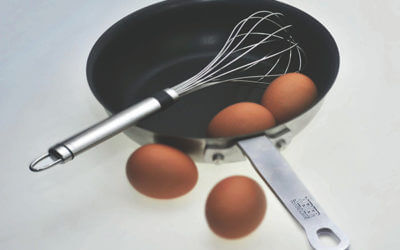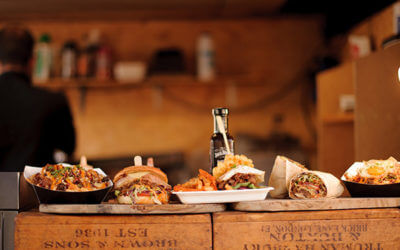Cooking Equipment Spotlight: Safe Indoor Grilling
August 13, 2018Indoor grilling is a great way for your restaurant to delight customers without having to run a big charcoal operation out back.
There are two primary types of indoor grills for restaurants. You can choose an indoor charbroiler that will give you a smoky, decadent taste when you cook meats, sides, and appetizers. You can also choose an indoor electric griddle, either ridged or flat.
Both cooking equipment options will help you create incredible food at high volume in your restaurant. To get the most out of your investment, take a look at these tips for indoor grilling.
Get the Right Cooking Equipment
Before we dive in, let me state the obvious – you cannot use an outdoor grill inside your restaurant kitchen. There are specific commercial grill models designed for indoor use, and they range from small countertop models to large models that sit on the floor next to your stove or oven.
If you use the wrong cooking equipment, you can put everyone in your restaurant at risk from carbon monoxide and other toxins.
No restaurant needs to bootstrap so much they get the wrong equipment. Buy used if you need to, but get the right grill!
Use Proper Safety if Grilling With Gas
If you choose an indoor charbroiler as your cooking equipment, your customers will get similar smoky flavor to what they can expect from an outside cookout. That smoky taste is what many people consider key to authentic barbecue.
An indoor charbroiler will be vented and connected to a gas line. This will allow you to get open flame under your grill, so it’s vital to be careful. Your employees should be attentive the entire time food is on the grill.
Keeping Your Grills Clean
There are two parts to proper grill maintenance. The first is to clean your indoor grill immediately after the food is done. In many restaurants, this is done by scraping a flat grill or using a brush on a grill top or rigid plate.
This helps prevent flavor transfer or a burnt taste to the next food that’s cooked on the grill. It also helps make cleaning much easier at the end of the shift.
The end-of-shift cleaning is the next priority. The leftover food bits and grease on either type of grill can be a health and fire hazard. It’s vital to carefully clean both the cooktop and any grease catcher areas of the grill.
Finally, make sure your employees know to clean any venting hood you might have above your grill. Proper cleaning will help your cooking equipment last longer and help you serve customers delicious meals every day.
Ready to Get Started With an Indoor Grill?
Whether you need to replace old cooking equipment or you are looking to add grilled entrees to your menu, having the right type of grill is essential.
Gas grills can give more authentic flavor but tend to be more expensive and can pose more risks. A griddle can get you the feel of grilling from an electric power source, but you may need to marinate or smoke your meat to add more flavor.
Ready to look at your options? We’ve been serving Little Rock for many years, and we’d love to help you as well. Contact us for more information today!
Commercial Kitchen Debate: Stainless Steel vs. Non-Stick Pans
If you run a commercial kitchen, you probably have a lot of ways of doing things that just seem right to you. For whatever reason, you decided between a gas and electric stove. You made decisions about dishware. And you probably have a position on the stainless steel...
Restaurant Equipment: How to Handle Gluten Allergies
In the last five years, you’ve probably seen a dramatic increase in the number of restaurant customers you have that are avoiding gluten. Some of them simply don’t like it, and others have a life-threatening reaction if they eat it. As a restaurant owner, you want to...
Reduce Food Waste: Proper Kitchen Equipment and More
Food waste is a reality in any commercial restaurant, but it doesn’t have to be accepted blindly. Too many restaurant owners or head chefs feel as though there is nothing they can do about this waste. Fortunately, there’s a lot you can do to reduce food waste in your...



